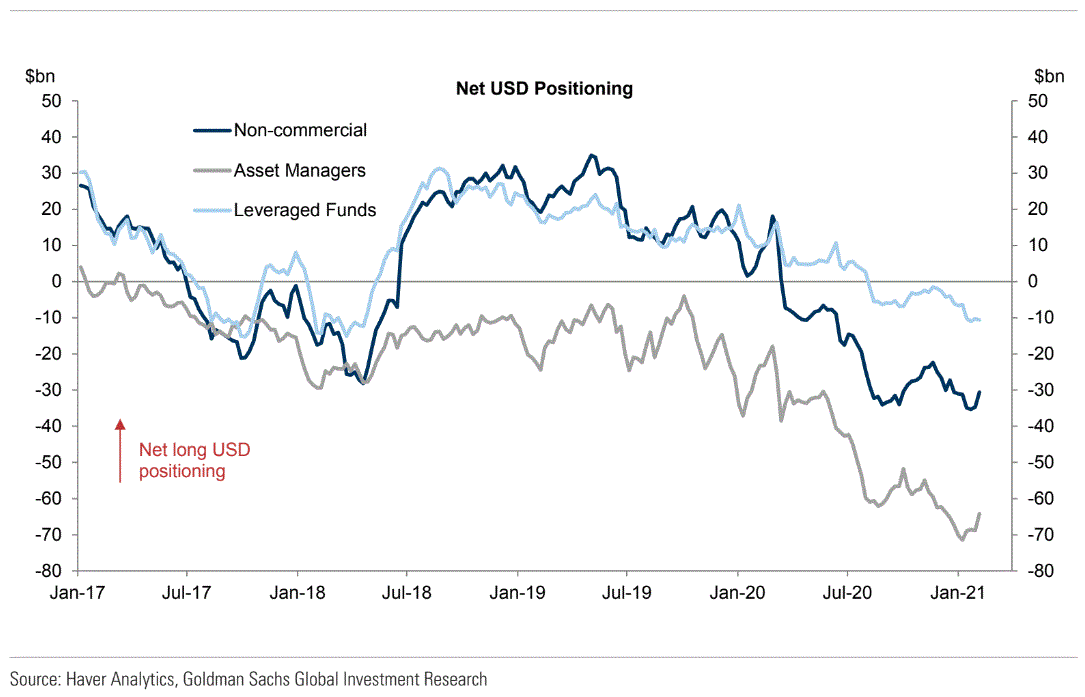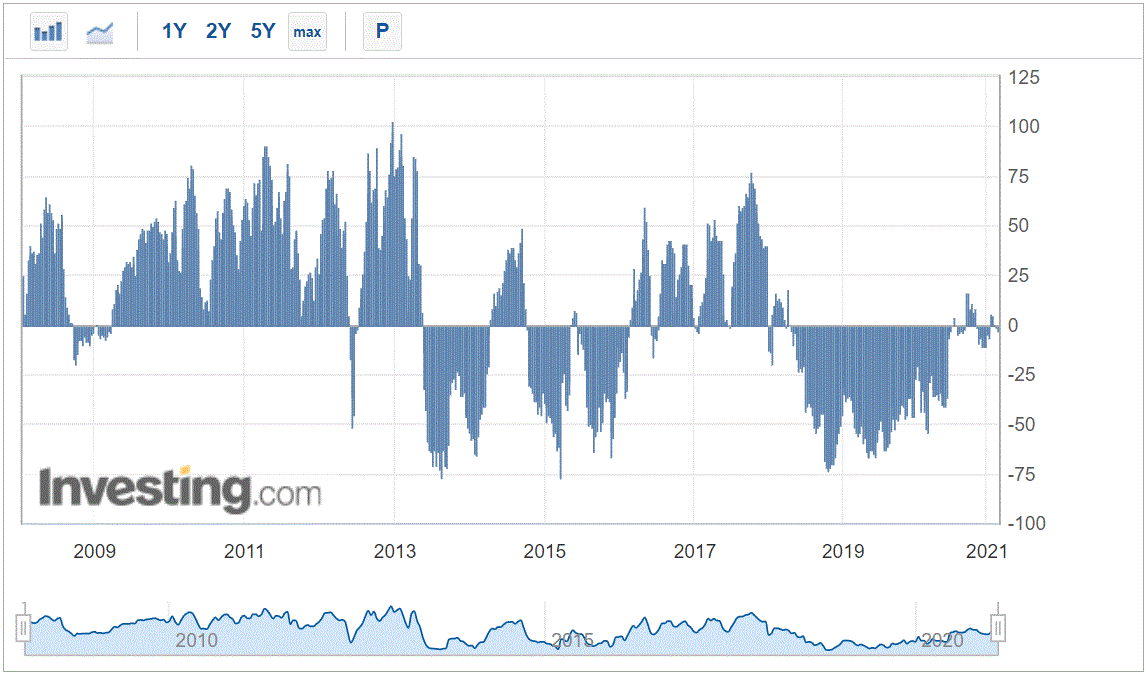The Australian dollar has been rising very quickly in the past few weeks. This is as expected. My target is the low- to mid-80s. The drivers are obvious in very high terms of trade and a declining US dollar. How are these two playing out together?
First, a Wall St take on the US Dollar Index (DXY) via Societe Generale:
The Fed Chairman makes a strong case for the merits of allowing the US economy to run hot and temporary price hikes due to the pandemic to be ignored, if a broader labour market improvementis going to be achieved. He’s on much less solid ground if he thinks that rates this low doesn’t destabilise asset prices, but that’s for another day. He took some of the heat out of the bond market which may trigger the next round of dollar weakness?
The challenges facing EUR/USD are familiar. For now we define the range we’re in as 1.2020-1.2220, and won’t get excited until we break free. The only way that’s going to happen is with the help of broad-based gains by other currencies to drag the euro up despite the position logjam. So far this month, of a list of 31 currencies, the euro ranks 21st, one place above the dollar. The g10 laggards are the yen and Swiss franc, the g10 winners are AUD, GBP, NZD, CAD, NOK and SEK. The euro is also lagging PLN, CZK, and RUB. It’s likely to go onlaggingEuropean peers but may be able to break out of the top of its range if they are dragged along by Mr Powell’sdovishnessandglobal economic optimism. Concerns about possible fresh lockdowns in Europe and about slow vaccination rates, can just about be overlooked along with the positioning.
The G10 currencies which ought to benefit most easily from a very dovish Fed are still the ones sensitive to real estate-AUD, NZD and CAD. AUD is the most fashionable but also the one when RSIs are stretched. CAD is the least fashionable but the one which would benefit most from a short-term spike in oil prices. Meanwhile, the g10 currency which is surprising me the most, is sterling. Not because I never expected GBP/USD to get here–ourforecastslook for it to spend heret of the year in a 1.40-1.50 range–but because I don’t really understand why it’s so fashionable right now.
As I’ve noted many times, markets have a huge short in place on the US dollar which is making it difficult for it to break lower:
But Australian dollar positioning is still short so it has room to run higher:
We are now beginning to see this play out in the currency pair. While the US dollar hasn’t fallen in 10 weeks, the Australian dollar has marched higher regardless, up 3.5 cents over the same period.
This is quite unusual so it’s worth charting the pair in index form:
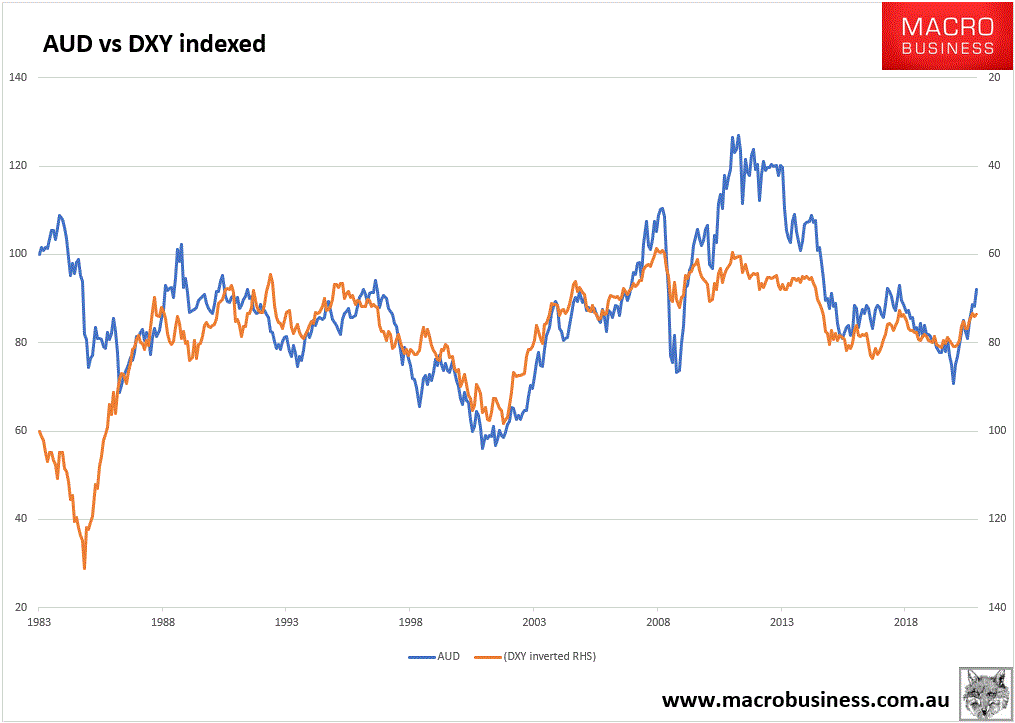
Such charts are always held hostage by the starting point but the 1983 float seems a reasonable place to begin. As you can see, the AUD is currently pushing away from the corresponding value of DXY. The divergence is already approaching the highs of previous commodity booms with the exception of the China supercycle:
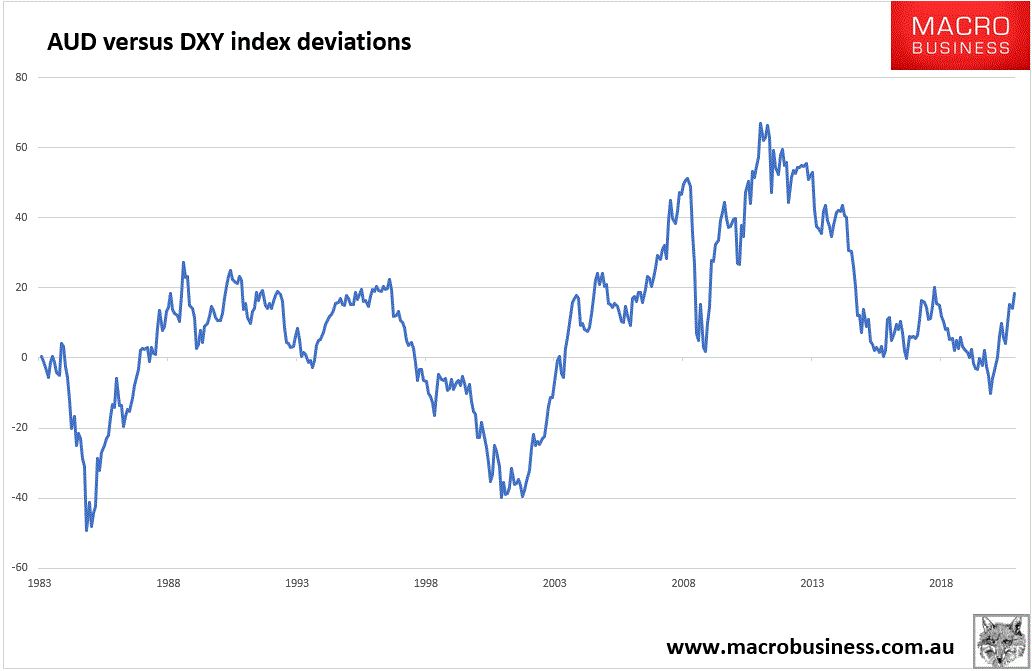
Presently, the terms of trade do justify this move even if the level of DXY does not:
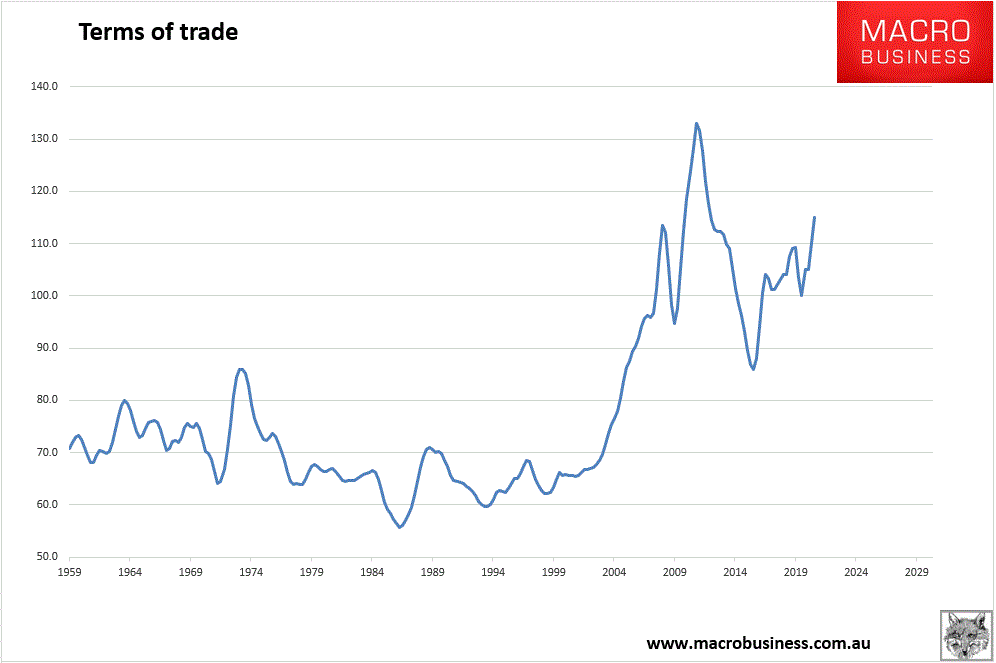
The question is, how far can it run? I don’t think that DXY is going anywhere near the lows of the pre- and post-GFC periods. That was during a historic US-centric bust.
Indeed, I am no longer confident that the US dollar will fall much further given the second half of the year is going to see the US outperform Europe and the world in growth, yields and inflation. Add a fading China and falling CNY and it’s even more difficult to see.
But we still have six months for DXY to fall so let’s say it drops another 5% drop by then. That would get us to AUD 0.835 on the Aussie.
So, to get higher than that we’ll need to see further AUD divergence from DXY which will largely hang on iron ore.
For iron ore I expect goods prices to continue in the first half with a goodly seasonal drop in May so the average price will probably be around where it is today overall.
Therefore, with another, say, 1.5% divergence from the falling DXY we’d get to 85 cents AUD by mid-year.
That would give AUD the third-largest DXY divergence on record:
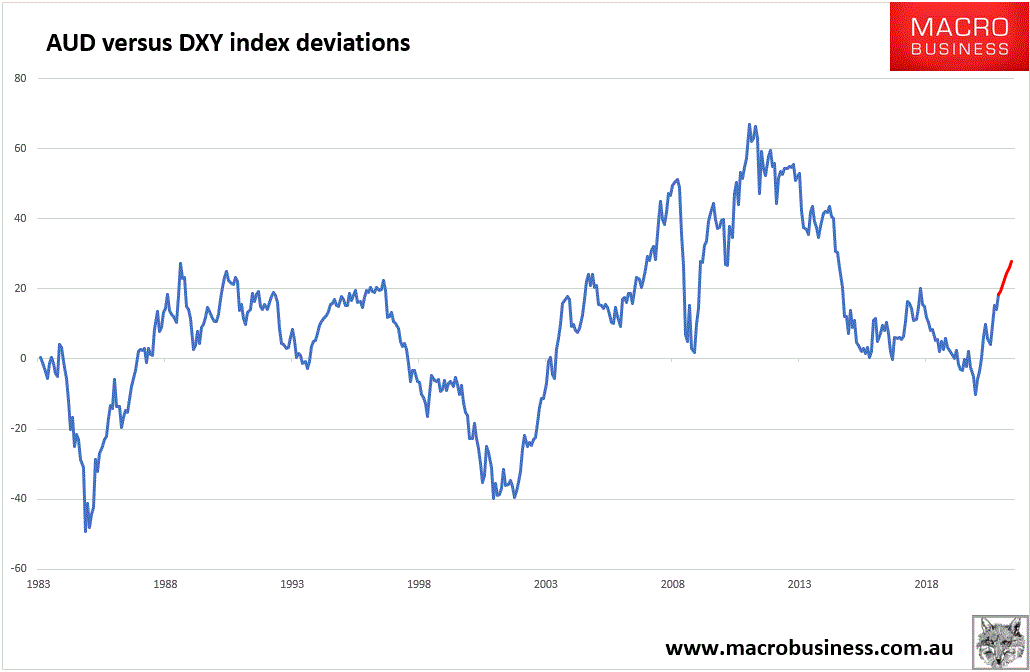
My best guess for the peak as things stand.

